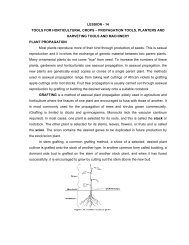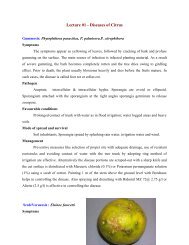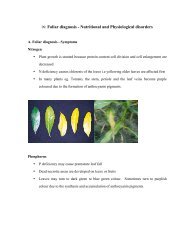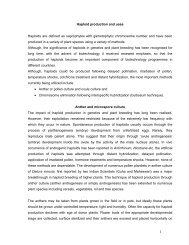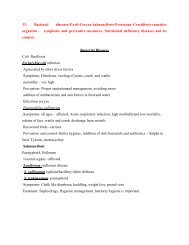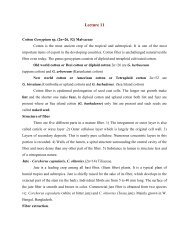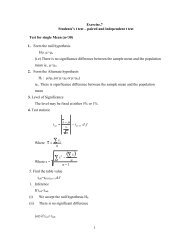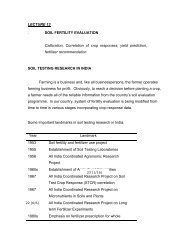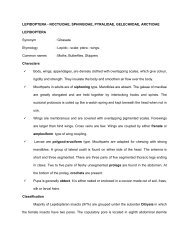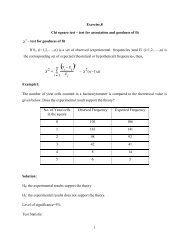Ph.D Programs in Agricultural Microbiology
Ph.D Programs in Agricultural Microbiology
Ph.D Programs in Agricultural Microbiology
Create successful ePaper yourself
Turn your PDF publications into a flip-book with our unique Google optimized e-Paper software.
Unit IV<br />
O ther topics ofcurrent<strong>in</strong>terest<br />
Lecture schedule<br />
1. The soil habitat – microhabitats <strong>in</strong> soil – heterogeneity of microhabitats<br />
2. Manipulation of physiochemical and biological factors <strong>in</strong> soil<br />
3. Soil microbial community – use of genetic markers to <strong>in</strong>vestigate<br />
community structure and<br />
diversity ofm icroorganism s<br />
4. Molecular tool box for ecological studies <strong>in</strong> soil – DNA extraction<br />
techniques<br />
5. Diversity of microbial 16S r DNA <strong>in</strong> soils- methodological problems of<br />
16S r DNA based studies.<br />
6. Gene stability and assessment of gene transfer <strong>in</strong> the phytosphere.<br />
7 Microbial biomarkers – cell envelope markers-biochemical markersnucleic<br />
acid biomarkers<br />
8. Microbial population as biomarkers.<br />
9. <strong>Ph</strong>ysiological and metabolic aspects of the survival of bacteria<br />
<strong>in</strong>troduced <strong>in</strong>to the soil<br />
10. Bacterial colonization of the rhizosphere and plant roots<br />
11. Bacterial colonization of soil and adaptation to soil conditions<br />
12. Soil and rhizosphere conditions affect<strong>in</strong>g <strong>in</strong>troduced bacteria<br />
13. Survival, dispersal and persistence of genetically modified<br />
microorganisms (GMM) after field release<br />
14. Microbial processes with<strong>in</strong> the soil – soil heterogeneity – physical,<br />
chemical and biological<br />
heterogeneity.



